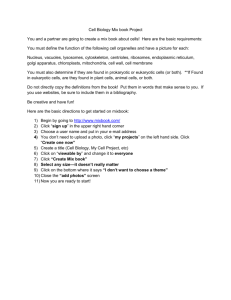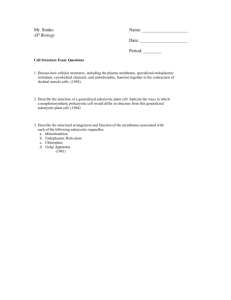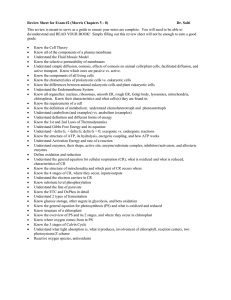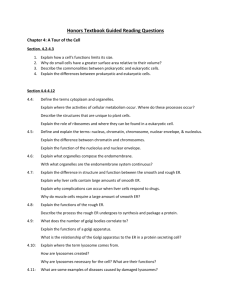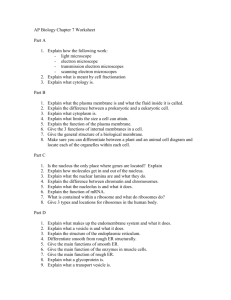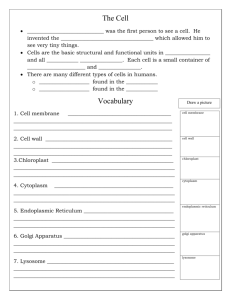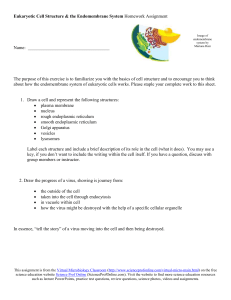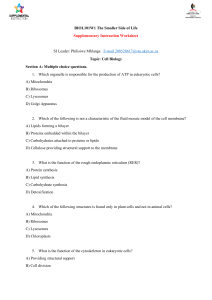Document 10278840
advertisement
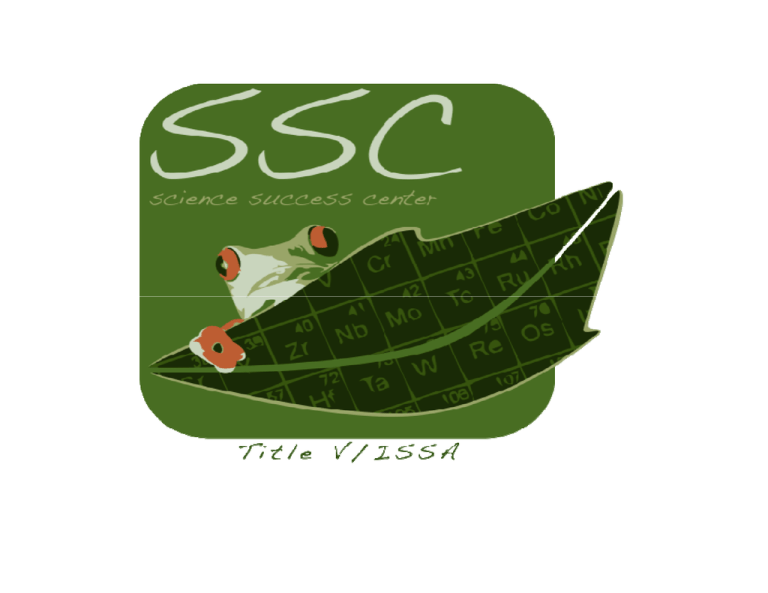
Microscopes reveal the world of the cell Electron microscopes (EM) SEM TEM Most cells are microscopic Prokaryotic cells are structurally simpler than eukaryotic cells Eukaryotic cells are partitioned into functional compartments (Animal) Plant Cell The structure of membranes correlates with their functions Cell structures that involve in manufacturing and breakdown • • • • • • The Nucleus Ribosomes The endoplasmic reticulum The Golgi apparatus Lysosomes Vacuoles The nucleus is the cells genetic control center Ribosomes make proteins for use in the cell and export Overview: Many cell organelles are connected through the endomembrane system • Many of the membranes of the eukaryotic cell are part of an ENDOMEMBRANE SYSTEM • Some of these membranes are physically connected and some are related by the transfer of membrane segments by tiny VESICLES The endoplasmic reticulum is a biosynthetic factory Synthesis, modification, and packaging of a secretory protein Rough ER: The Golgi apparatus finishes, sorts, and ships cell products Lysosomes are digestive compartments within a cell Vacuoles function in the general maintenance of the cell Paramecium Plant Cell A review of the structures involved in manufacturing and breakdown Energy-converting Organelles • The Mitochondria harvest chemical energy from food. • The Chloroplast converts solar energy to chemical energy Mitochondria harvest chemical energy from food Chloroplast convert solar energy to chemical energy Mitochondria and chloroplasts evolved by endosymbiosis The cell’s internal skeleton helps organize its structure and activities MICROFILAMENT INTERMEDIATE FILAMENT MICROTUBLE Cilia and flagella move when microtubules bend The extracellular matrix of animal cells functions in support, movement, and regulation Three types of cell junctions are found in animal tissues Cells walls enclose and support plant cells Review: Eukaryotic cell structures can be grouped on the basis of four basic functions
